
Dalat University
Faculty of Foreign Languages
Introduction to
English literature
Core Course Material
Áp dụng cho sinh viên từ K45
Selected and Compiled by Trương Thị Mỹ Vân
For Students Only, Not for Sale
Dalat - 2022

Table Of Contents
Poems
O My Luve’s Like A Red Red Rose By Robert Burns…...
Introduction To Poetry By Billy Collins …………………..
Richard Cory By Edwin Arlington Robinson………………
The Red Wheelbarrow By William Carlos Williams……
A Birthday By Christina Rossetti…………………….
Virtue By George Herbert…………………………..
In Reference To Her ChildrenBy Anne Bradstreet….
Eating Alone By Li-Young Lee………………………….
When You Are Old By William Butler Yeats……………
She Walks In Beauty By Lord Byron ………………………
Ozymandias By Percy Bysshe Shelley ……………………..
2
4
7
9
11
13
15
19
21
23
25
Fiction
Best Looking Girl In Town by Thyra Samster Winslow...
Can-Can By Arturo Vivante………………………………….
Cat In The Rain By Ernest Hemingway……………………
The Necklace By Guy De Maupassant…………………….
The Story Of An Hour By Kate Chopin……………………
Dead Men's Path By Chinua Achebe……………………….
28
32
36
41
51
55
Literary Terms …………………………………………..
References...…………………………………………………..
58
69

1
READING POETRY
“Be completely open – innocent, if you will, of the poem. Walk in, just like
it’s water, and says, ‘What is this?” And read it over and over again….
[Read] with that kind of ignorant joy, and [let] yourself be bewildered
when you’re bewildered.” (conversation with Marie Howe)
ROBERT BURNS (1759-1796)
One of Scotland’s greatest poets, Robert Burns was born to a struggling tenant
farm family. At age fifteen, Burns fell in love and consequently wrote his first
poem. He became notorious for his love affairs, which shocked the Calvinist
society surrounding him, and he cultivated his poetry based on his own broad
reading. He published Poems in 1786 and became immensely popular in
Edinburgh. But perhaps his greates achievement was his preservation and
creation of folk songs, which he did formally for two anthologies, The Scots
MusicalMuseum and Select Collection of Original Scottish Airs. Burns is known
for writing in Scots, and English dialect spoken by commoners and by
eighteenth-century nobility. Burns’s songs are still widely known today,
especially “Auld Lang Syne.”

2
As you read: Note that the speaker addesses both his lover and an audience over
her shoulder; the first stanza is a kind of general declaration, and the next three
are specific to “my bonnie lass” herself.
O My Luve’s Like A Red Red Rose
Robert Burns
O my Luve* is like a red, red rose
That’s newly sprung in June;
O my Luve is like the melody
That’s sweetly played in tune.
So fair art* thou*, my bonnie lass,
So deep in luve am I;
And I will luve thee still, my dear,
Till a’* the seas gang* dry.
Till a’ the seas gang dry, my dear,
And the rocks melt wi’* the sun;
I will love thee still, my dear,
While the sands o’* life shall run.
And fare thee weel*, my only luve!
And fare thee weel awhile!
And I will come again, my luve,
Though it were ten thousand mile.
love
are, you
all, going
with
of
farewell
Study questions
1. If this poem is a declaration, what is the speaker declaring? How long does
he indicate his love will last ?
2. Burns compiled and created Scottish folk songs in the Scots dialect. What
about this poem seems musical to you?
3. What two things does the poet compare to his ‘luve’ in the first stanza?
4. What words does the speaker use that show how ‘deep in luve am I’?
5. How would you characterise the love in this poem?

3
BILLY COLLINS (1941 - )
Billy Collins (1941- ) served as Poet Laureate of the United States from 2001 to
2003. He is one of America’s best-selling poets. His books include Sailing Alone
Around the Room: New and Selected Poemsin 2001, Picnic, Lightning in 1998,
and The Art of Drowning in 1995. In October 2004, Collins was the inaugural
recipient of the Poetry Foundation’s Mark Twain Award for humorous poetry. He
has served as a Literary Lion of the New York Public Library and he is a
distinguished professor of English at Lehman College, City University of New
York, where he has taught for the past 30 years.
Dubbed “the most popular poet in America” by Bruce Weber in the New York
Times, Billy Collins is famous for conversational, witty poems that welcome
readers with humor but often slip into quirky, tender or profound observation on
the everyday, reading and writing, and poetry itself. John Updike praised Collins
for writing “lovely poems...Limpid, gently and consistently startling, more
serious than they seem, they describe all the worlds that are and were and some
others besides.” But Collins has offered a slightly different take on his appeal,
admitting that his poetry is “suburban, it’s domestic, it’s middle class, and it’s
sort of unashamedly that.”
Collins has described himself as “reader conscious”: “I have one reader in mind,
someone who is in the room with me, and who I’m talking to, and I want to make
sure I don’t talk too fast, or too glibly. Usually I try to create a hospitable tone at
the beginning of a poem. Stepping from the title to the first lines is like stepping
into a canoe. A lot of things can go wrong.” Collins further related: “I think my
work has to do with a sense that we are attempting, all the time, to create a
logical, rational path through the day. To the left and right there are an amazing
set of distractions that we usually can’t afford to follow. But the poet is willing to
stop anywhere.”

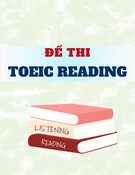









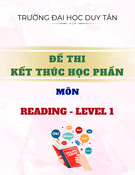
![Đề cương môn Tiếng Anh 1 [Chuẩn Nhất/Mới Nhất]](https://cdn.tailieu.vn/images/document/thumbnail/2025/20251130/cubabep141@gmail.com/135x160/51711764555685.jpg)


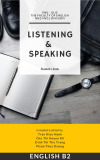
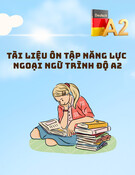
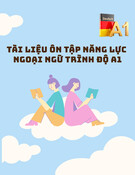





![Mẫu thư Tiếng Anh: Tài liệu [Mô tả chi tiết hơn về loại tài liệu hoặc mục đích sử dụng]](https://cdn.tailieu.vn/images/document/thumbnail/2025/20250814/vinhsannguyenphuc@gmail.com/135x160/71321755225259.jpg)


